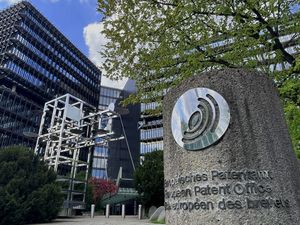The European Patent Office (EPO) recognizes the importance of high-quality research on patent-related intellectual property (IP) matters to inform policymakers and facilitate sound business decisions in a context where intangible assets, innovation, and IP rights have become pivotal in the economy. With the Academic Research Programme (EPO ARP), launched in 2017, the EPO seeks in particular to encourage more academic IP research and to promote the dissemination of research results.
In order to facilitate effective research collaboration, the EPO supports collaborative research schemes in which scientific partner institutions team up to work on projects with a broader scope, bigger budget, and longer duration, and with the potential to involve a range of EPO departments. The current EPO ARP comprises two main streams: “The New Frontiers of Innovation” and “Digital Technologies for IP”. Out of 36 proposals submitted to the EPO, only five were awarded a grant. Grant-holders receive up to 150,000 Euro for their projects.
Within the scope of the first stream and the research area “From University Research to Innovation Ecosystems”, a research group around Dietmar Harhoff, with Sebastian Erhardt, Michael E. Rose, Mainak Ghosh, and Erik Buunk, has now received a major grant for the project “Tracing the Flow of Knowledge from Science to Technology Using Deep Learning”.
The team seeks to harness the semantic similarity between patents and scientific publications using the latest advances in machine learning. The solution utilizes transformer models that identify semantically similar documents. A patent that is highly similar to prior scientific publication has possibly been influenced by it. The approach is scalable and able to handle large amounts of text. Once documents are semantically linked, the data is used to draw inferences regarding the diffusion of knowledge from science within publications and to and within patents.
Based on the information generated by the approach, the team will be able to build an entire knowledge landscape to trace the significance of fundamental research in emerging technologies.

